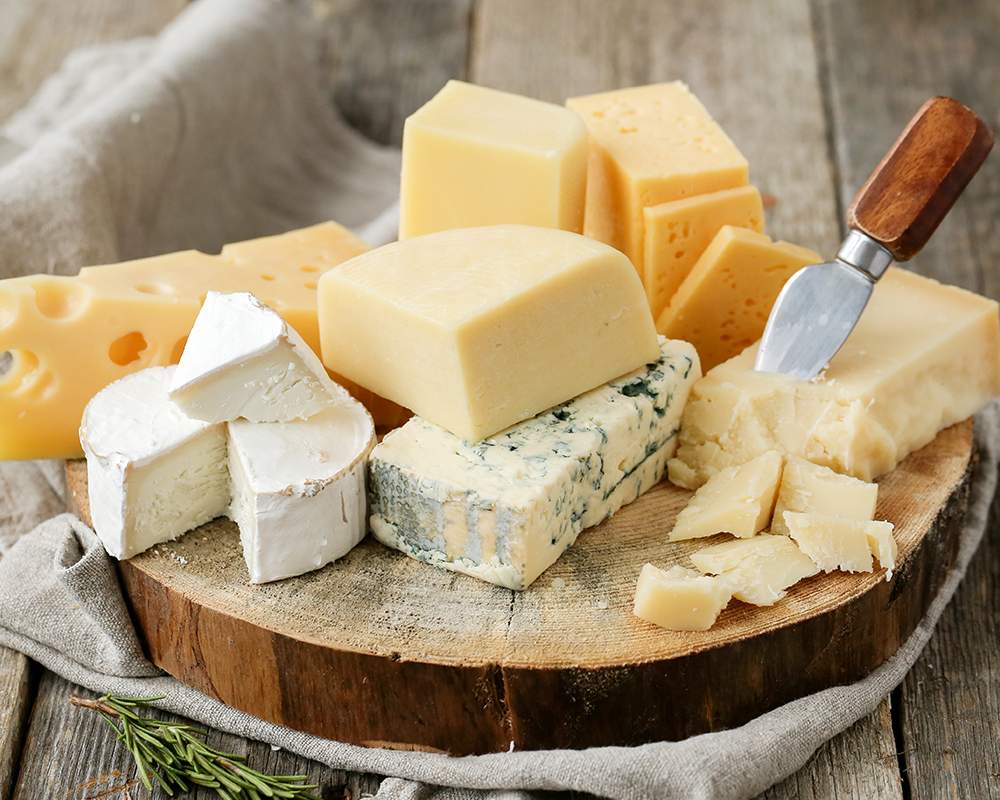
Have you at any point taken a chomp of truly matured cheddar and experienced a little bit of crunch and texture? You are actually tasting tyrosine in cheese. The cheddar gems that structure over a significant lot of time because of concoction and the breakdown of proteins. The cheddar gems can change in size, surface, and position contingent upon the cheddar. Keep in mind that they may appear to create the additional cheddar experience of a total burst of sweet and salty flavors. The science behind the crystallization process is extremely unpredictable.
At the point when a cut of cheddar is framed, proteins and fats gathered in the form of chains, creating curds. At the point when the cheddar ages, the protein within the cheese fastens, in the long run, it starts to unwind and abandon little crunchy stores which are called precious cheddar stones. In any case, not every single matured cheddar will create gems as their development depends on a couple of factors.
Cheddar Gems: What Are They?
Like the usual structure of precious mineral stone, the probability of cheddar gem arrangement is reliant on the kind of protein materials of the cheddar cheese and the centralization process. The crystallization procedure starts with proteins in the serum or glue, moving around within it. This process pulls in an added amount of proteins, and then the cheddar gems will develop.
There are two sorts of cheddar gems that can frame in a cheddar: Tyrosine and Calcium Lactate.
Tyrosine precious stones structure just in the inside of the cheddar and are firm, splendid white, and found in Swiss and Romano cheeses. Calcium Lactate precious stones can frame in both the inside of the cheddar and superficially. Regularly, they are found in cheddar and Colby. These precious stones are milder, paler, and seem more every now and again than Tyrosine gems. These two kinds of gems can likewise show up close by one another in specific cheeses like matured Parmigiano-Reggiano or Gouda. Separating between the two kinds of precious stones is as simple as figuring out which gem is somewhat milder and paler and furthermore coordinates the gems on the outside of the cheddar – that is your calcium lactate.
Calcium Lactate Crystals
Those gems regularly found on matured cheddar cheeses is due to calcium lactate gems. These gems made of lactic acid and calcium salt. As cheddar cheese ages, the lactose of the cheddar becomes lactic acid. While lactic acid dimensions ascend in the cheddar, they can start to tie with calcium particles shaping calcium lactate. As the level of calcium lactate continues to rise, it will, in the long run, achieve a shape and become noticeable to the naked eye in the form of gems.
These gems can shape on the exterior of cheddar cheeses where most of the dampness can gather. That dampness is the ideal environment of calcium lactate atoms to complete the crystallization process. Baggy bundling and temperature misuse can urge dampness to frame on the outside of the cheddar prompting the expanded nearness of precious stones.
More often than not, calcium lactate precious stones show up over the outside of the cheddar. The calcium lactate precious stones have a fine feel and look to it and don’t happen in unmistakable bits. They happen mostly just on the outside of the cheddar. It can also be found all through the inside too. They will happen on the sides of the plastic contacting the cheddar and furthermore on some surfaces on the exterior of the cheddar cheese.
Do we need to do anything else to enhance the look? Not by any stretch of the imagination. You might wonder why the damnation do some dubbed them to enhance precious stones at that point? Two fundamental reasons:
Their quality ordinarily demonstrates a well-matured bit of cheddar that has a solid, and hearty flavor.
Tyrosine In Cheese
Those precious stones that can be seen in matured Dutch, Swiss-style, and Italian cheeses are actually tyrosine. The amino acid tyrosine has the structure of squares of proteins). Tyrosine gems appear to be connected to the action and the presence of the Lactobacillus helveticus. The Lactobacillus helveticus separates peptides from amino acids to tyrosine being one of them. As the tyrosine develops, it will, in the end, solidify out. They more often than not happen in unmistakable bits that are thick and have a noisy crunch to it when bitten.
Similarly, with calcium lactate, they don’t have any genuine savor. It is dubbed under the key phrase “enhance gems” for clamorous reasons from expressed previously. The calcium lactate is not as affected as to how the cheddar is dealt with. I’ll quickly make reference to the nearness of another amino acid precious stone that can be seen on a considerable lot of indistinguishable cheeses from tyrosine, which is leucine. The leucine amino acid frequently seems to be like calcium lactate.
Numerous things can impact the nearness and development of precious stones in cheddar. How the cheddar is developed, and then the fixings the cheesemaker utilized can effectively affect precious stones.
Numerous individuals mistake precious cheddar stones for shape or yeast development. Previously, cheesemakers attempted to stay away from crystallization, worried that their clients would not need a cheddar that showed up curiously rotten. Notwithstanding, that is all evolving. Nowadays, cheddar gems are stylish and remain totally flavorful. The cheddar gems add flavor and texture to the cheddar cheese. It is such a wonderful cheese to eat by itself.